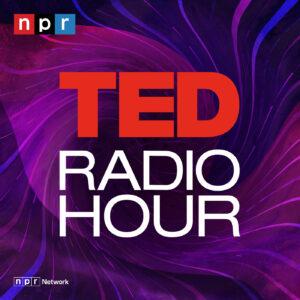Intro
In this episode of “The Daily,” the focus is on driverless cars and their impact on San Francisco. The development of this technology has sparked a tech arms race among various companies, but it has also raised concerns about safety and job displacement. The clash between activism and technological innovation is highlighted in a public hearing where regulators will decide the future of driverless cars in the city.
Main Takeaways
The Rise of Driverless Cars
- Driverless cars are now a reality in San Francisco, with hundreds of cars driving around almost constantly in most of the city.
- These cars are outfitted with sensors designed to detect everything going on around them.
- Users can hail a car through the Waymo app, but the car may not pick them up exactly where they want.
- The car gives a short safety briefing, and then the wheel starts to turn on its own, driving at the pace and care of a particularly conscientious 16-year-old driver.
The History and Challenges of Driverless Cars
- Autonomous vehicles have been a goal since the 60s, largely driven by labs funded by the Defense Department for military use.
- In 2005, DARPA organized a contest for research teams to build a driverless vehicle, which caught the attention of Google founders Larry Page and Sergey Brin.
- The biggest challenge in creating a driverless car is dealing with the chaos of the road and predicting unexpected events.
The Clash Between Activism and Technological Innovation
- The development of driverless cars sparked a tech arms race among technology companies, ride-hailing companies, and traditional car companies.
- The reality of building this technology was extremely difficult, and the industry was set back in 2018 after a fatal crash involving an Uber test car.
- The future of driverless cars in San Francisco is at stake in a public hearing where regulators will decide whether companies like Cruise and Waymo can operate without drivers behind the wheel.
Safety and Job Displacement Concerns
- Self-driving car companies like Waymo and Cruise are testing their vehicles in limited geographic areas to narrow variables and limit unexpected moments.
- Driverless cars have caused major traffic congestion, accidents, and injuries in San Francisco.
- There are arguments for prioritizing technological progress over regulation, but also concerns about the safety and interference with emergency services caused by self-driving cars.
- Self-driving cars may take away existing jobs, causing concern for those who rely on them for their livelihood.
The Uncertain Future of Driverless Cars
- The introduction of driverless cars is causing real chaos in the city.
- Two accidents involving driverless cars occurred within a week after the decision to allow paid driverless rides across San Francisco.
- The question arises of how much tolerance society should have for the flaws of driverless cars and whether it is safe to trust the technology to replace human drivers.
- It’s unclear whether the technology can satisfy the need for driverless cars in terms of safety and cost-effectiveness.
Summary
The Rise of Driverless Cars
Driverless cars have become a reality in San Francisco, with hundreds of cars equipped with sensors driving around the city. Users can hail these cars through the Waymo app, but there are limitations to where they can be picked up. The safety briefing and autonomous driving experience are akin to a cautious teenage driver.
The History and Challenges of Driverless Cars
The pursuit of driverless cars dates back to the 1960s, driven by military-funded labs. In 2005, a contest organized by DARPA caught the attention of Google founders, leading to the establishment of Google X and the pursuit of a driverless car. The biggest challenge lies in navigating the unpredictable nature of the road and responding to unexpected events.
The Clash Between Activism and Technological Innovation
The development of driverless cars has triggered intense competition among technology, ride-hailing, and traditional car companies. However, the industry faced setbacks after a fatal crash involving an Uber test car. The future of driverless cars in San Francisco hangs in the balance as regulators decide whether companies can operate without human drivers.
Safety and Job Displacement Concerns
Self-driving car companies are testing their vehicles in limited areas to minimize variables and unexpected incidents. However, driverless cars have caused traffic congestion, accidents, and injuries in San Francisco. Balancing technological progress with safety and the potential job displacement caused by automation remains a concern.
The Uncertain Future of Driverless Cars
The introduction of driverless cars has led to chaos in San Francisco, with accidents occurring shortly after paid driverless rides were allowed. This raises questions about society’s tolerance for the flaws of driverless cars and whether they can truly replace human drivers in terms of safety and cost-effectiveness.
Conclusion
The rise of driverless cars in San Francisco brings both excitement and challenges. While the technology holds promise for a future of safer and more efficient transportation, concerns about safety, job displacement, and the need for further development remain. The clash between activism and technological innovation underscores the complexity of integrating driverless cars into society.
